A revision of dragon millipedes I: genus Desmoxytes Chamberlin, 1923, with the description of eight new species (Diplopoda, Polydesmida, Paradoxosomatidae)
- PMID: 29875597
- PMCID: PMC5988806
- DOI: 10.3897/zookeys.761.24214
A revision of dragon millipedes I: genus Desmoxytes Chamberlin, 1923, with the description of eight new species (Diplopoda, Polydesmida, Paradoxosomatidae)
Abstract
The dragon millipede genus Desmoxytes s.l. is split into five genera, based on morphological characters and preliminary molecular phylogenetic analyses. The present article includes a review of Desmoxytes s.s., while future articles will deal with Hylomus Cook and Loomis, 1924 and three new genera which preliminarily are referred to as the 'acantherpestes', 'gigas', and 'spiny' groups. Diagnostic morphological characters of each group are discussed. Hylomus is resurrected as a valid genus and the following 33 species are assigned to it: H. asper (Attems, 1937), comb. n., H. cattienensis (Nguyen, Golovatch & Anichkin, 2005), comb. n., H. cervarius (Attems, 1953), comb. n., H. cornutus (Zhang & Li, 1982), comb. n., H. draco Cook & Loomis, 1924, stat. rev., H. enghoffi (Nguyen, Golovatch & Anichkin, 2005), comb. n., H. eupterygotus (Golovatch, Li, Liu & Geoffroy, 2012), comb. n., H. getuhensis (Liu, Golovatch & Tian, 2014), comb. n., H. grandis (Golovatch, VandenSpiegel & Semenyuk, 2016), comb. n., H. hostilis (Golovatch & Enghoff, 1994), comb. n., H. jeekeli (Golovatch & Enghoff, 1994), comb. n., H. lingulatus (Liu, Golovatch & Tian, 2014), comb. n., H. laticollis (Liu, Golovatch & Tian, 2016), comb. n., H. longispinus (Loksa, 1960), comb. n., H. lui (Golovatch, Li, Liu & Geoffroy, 2012), comb. n., H. minutuberculus (Zhang, 1986), comb. n., H. nodulosus (Liu, Golovatch & Tian, 2014), comb. n., H. parvulus (Liu, Golovatch & Tian, 2014), comb. n., H. phasmoides (Liu, Golovatch & Tian, 2016), comb. n., H. pilosus (Attems, 1937), comb. n., H. proximus (Nguyen, Golovatch & Anichkin, 2005), comb. n., H. rhinoceros (Likhitrakarn, Golovatch & Panha, 2015), comb. n., H. rhinoparvus (Likhitrakarn, Golovatch & Panha, 2015), comb. n., H. scolopendroides (Golovatch, Geoffroy & Mauriès, 2010), comb. n., H. scutigeroides (Golovatch, Geoffroy & Mauriès, 2010), comb. n., H. similis (Liu, Golovatch & Tian, 2016), comb. n., H. simplex (Golovatch, VandenSpiegel & Semenyuk, 2016), comb. n., H. simplipodus (Liu, Golovatch & Tian, 2016), comb. n., H. specialis (Nguyen, Golovatch & Anichkin, 2005), comb. n., H. spectabilis (Attems, 1937), comb. n., H. spinitergus (Liu, Golovatch & Tian, 2016), comb. n., H. spinissimus (Golovatch, Li, Liu & Geoffroy, 2012), comb. n. and H. variabilis (Liu, Golovatch & Tian, 2016), comb. n.Desmoxytes s.s. includes the following species: D. breviverpa Srisonchai, Enghoff & Panha, 2016; D. cervina (Pocock,1895); D. delfae (Jeekel, 1964); D. des Srisonchai, Enghoff & Panha, 2016; D. pinnasquali Srisonchai, Enghoff & Panha, 2016; D. planata (Pocock, 1895); D. purpurosea Enghoff, Sutcharit & Panha, 2007; D. takensis Srisonchai, Enghoff & Panha, 2016; D. taurina (Pocock, 1895); D. terae (Jeekel, 1964), all of which are re-described based mainly on type material. Two new synonyms are proposed: Desmoxytes pterygota Golovatch & Enghoff, 1994, syn. n. (= Desmoxytes cervina (Pocock, 1895)), Desmoxytes rubra Golovatch & Enghoff, 1994, syn. n. (= Desmoxytes delfae (Jeekel, 1964)). Six new species are described from Thailand: D. aurata Srisonchai, Enghoff & Panha, sp. n., D. corythosaurus Srisonchai, Enghoff & Panha, sp. n., D. euros Srisonchai, Enghoff & Panha, sp. n., D. flabella Srisonchai, Enghoff & Panha, sp. n., D. golovatchi Srisonchai, Enghoff & Panha, sp. n., D. octoconigera Srisonchai, Enghoff & Panha, sp. n., as well as one from Malaysia: D. perakensis Srisonchai, Enghoff & Panha, sp. n., and one from Myanmar: D. waepyanensis Srisonchai, Enghoff & Panha, sp. n. The species can mostly be easily distinguished by gonopod structure in combination with other external characters; some cases of particularly similar congeners are discussed. All species of Desmoxytes s.s. seem to be endemic to continental Southeast Asia (except the 'tramp' species D. planata). Some biological observations (relationship with mites, moulting) are recorded for the first time. Complete illustrations of external morphological characters, an identification key, and distribution maps of all species are provided.
Keywords: Southeast Asia; aposematic; dragon millipede; new species; taxonomy.
Figures
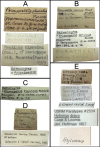
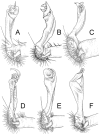
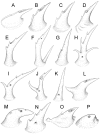
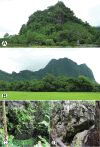





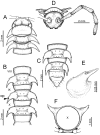



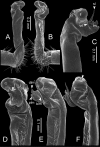
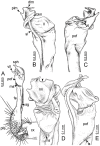



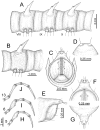

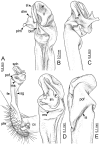

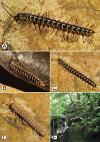

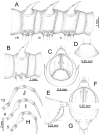



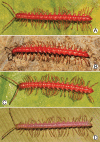
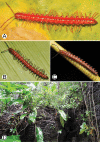



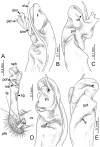
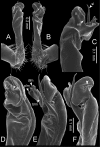

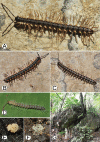

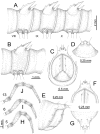



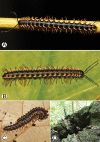




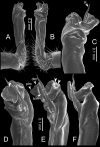
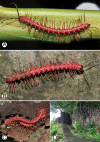
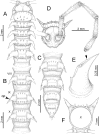








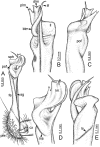
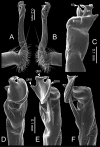
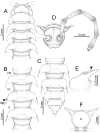
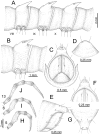

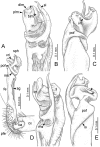
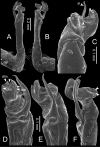
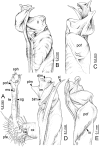



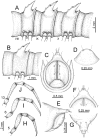
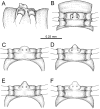


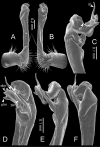





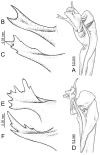


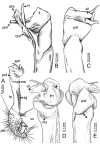

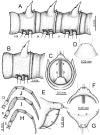



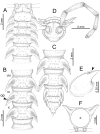
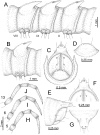
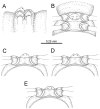
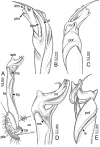

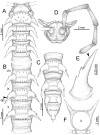


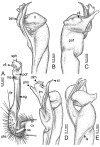

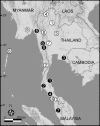
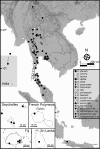
References
-
- Adis J, Hansen B, Wilck L, Adis I, Hirschel K. (2000) A spinning apparatus documented in Polydesmida for the first time. Fragmenta Faunistica Supplement 43: 139–148.
-
- Attems C. (1914) Die indo-australischen Myriopoden. Archiv für Naturgeschichte, Berlin 80A: 1–398. https://biodiversitylibrary.org/page/46057676
-
- Attems C. (1936) Diplopoda of India. Memoirs of the Indian Museum 11: 133–323.
-
- Attems C. (1937) Myriapoda 3. Polydemoidea I, Fam. Strongylosomidae. Das Tierreich 68: 1–300.
-
- Attems C. (1953) Myriapoden von Indochina. Expedition von C. Dawydoff (1938–1939).
LinkOut - more resources
Full Text Sources
Other Literature Sources
Miscellaneous
